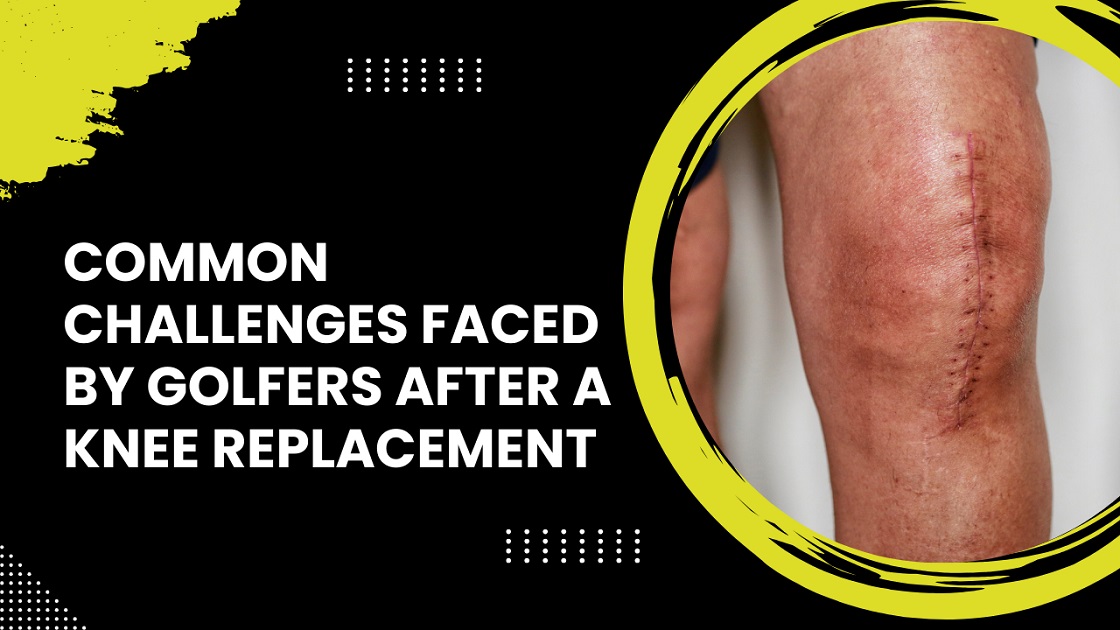Knee replacement recovery tips
Recovering from knee replacement surgery can be a challenging and often lengthy process. It requires patience, dedication, and a commitment to following your doctor's instructions. For golfers who have undergone knee replacement, there are specific considerations and precautions that need to be taken to ensure a safe and successful return to the golf course. In this article, we will discuss some helpful tips for golfers on their journey to recovery after knee replacement.
Golfing with a replaced knee
Golf is a popular sport that requires a good range of motion, stability, and balance. For golfers who have had knee replacement surgery, it is natural to wonder whether they will be able to enjoy the game again. The good news is that, in most cases, golfers can return to the sport after knee replacement, but it is important to take certain precautions.
Golf restrictions after replacement
While golfing is generally considered a low-impact sport, there are still some restrictions and guidelines that golfers need to be aware of after knee replacement surgery. These restrictions are in place to protect the new knee joint and ensure a safe and successful recovery. Let's explore some common golf restrictions that golfers may face after knee replacement.
- Take it slow: It is important to start slow and gradually increase your activity level. This applies to both your overall activity level and your golf game. Your doctor or physical therapist will provide guidance on when it is safe to start playing golf again and how much you should initially do.
- Listen to your body: Pay attention to how your knee feels during and after playing golf. If you experience pain, swelling, or other discomfort, it is important to stop and rest. Pushing through the pain could cause further damage to your knee.
- Use proper technique: Ensure that you are using proper technique when swinging the golf club. Ask your physical therapist or golf pro to evaluate your swing and provide guidance on any modifications you may need to make to accommodate your knee replacement.
- Avoid excessive bending: Avoid excessive bending of the knee during your swing. This can put unnecessary strain on the joint. Instead, focus on using your lower body and hips to generate power in your swing.
- Warm up and stretch: Prior to playing golf, it is important to warm up your body and stretch your muscles. This helps to improve flexibility and reduce the risk of injury.
- Maintain a healthy weight: Excess weight can put added stress on your knee joint. Maintaining a healthy weight can help to reduce the strain on your knee and improve your overall golf performance.
- Stay hydrated: Proper hydration is important for optimal performance and overall well-being. Be sure to drink plenty of water before, during, and after your game.
- Wear supportive shoes: Invest in a pair of golf shoes that provide good support and cushioning. This can help to absorb shock and reduce the impact on your knee joint.
Remember, every golfer's recovery journey is unique, and it is important to consult with your doctor and physical therapist to ensure that you are following the appropriate protocol for your specific situation.
Conclusion
Returning to golf after a knee replacement is an achievable goal for many golfers. By following proper precautions, taking it slow, and listening to your body, you can safely and successfully enjoy the game again. It is important to remember that the recovery process takes time, and patience is key. By incorporating the tips mentioned in this article and seeking guidance from your medical professional, you can confidently navigate the challenges and get back on the golf course with a replaced knee.
Check out our latest blog post, "Avoid lifting heavy objects After a Knee Replacement" for valuable insights and practical tips on knee care.

